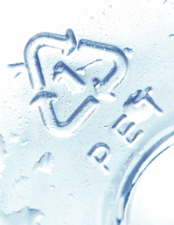Savvy labeling to boost PET recyclability
By Rikki Stancich
Published on 02 April 2013

It is little wonder that sustainable label and packaging leader Avery Dennison has just won a sustainability award. The company recently launched a portfolio of labeling materials designed to improve the recycling of polyethylene terephthalate (PET).
In 2010, labels, adhesives and other components contaminated roughly 32.2% of the 1.5 billion pounds of PET collected for recycling in the United States. As a result, 18 million kilograms (40 million pounds) of bottles that should have been recycled, ended up in landfill.
Responding to this, Avery Dennison came up with its Bottle-to-Bottle (B2B) portfolio of labels. Built on clear or white BOPP film facestock glued to the bottle using SR3010, the labels are designed to “cleanly separate from the PET flake to deliver pure PET flakes, conserve virgin PET resources and reduce landfill”, says the company.
SR3010 is an adhesive bond that cleanly separates from the bottle at the point of recycling. Because the film and adhesive are less dense than the PET flakes, (left over when the residue from the film and adhesive are removed from the container fragments), the PET flakes to sink to the bottom of the tank while the label flakes rise to the top.
This makes is easy for the label to be removed from the tank, allowing the PET flakes to move on to the next stage of recycling, explains the company. By deploying these types of plastic bottle labels, the company has effectively boosted the recycling efficiency and quality of recycled PET.
In recognition of its contribution, Avery Dennison was last week awarded the Society of Plastic Engineers 2013 Environmental Award in the Design for Sustainability category for its Bottle-to-Bottle Portfolio of labeling materials.
